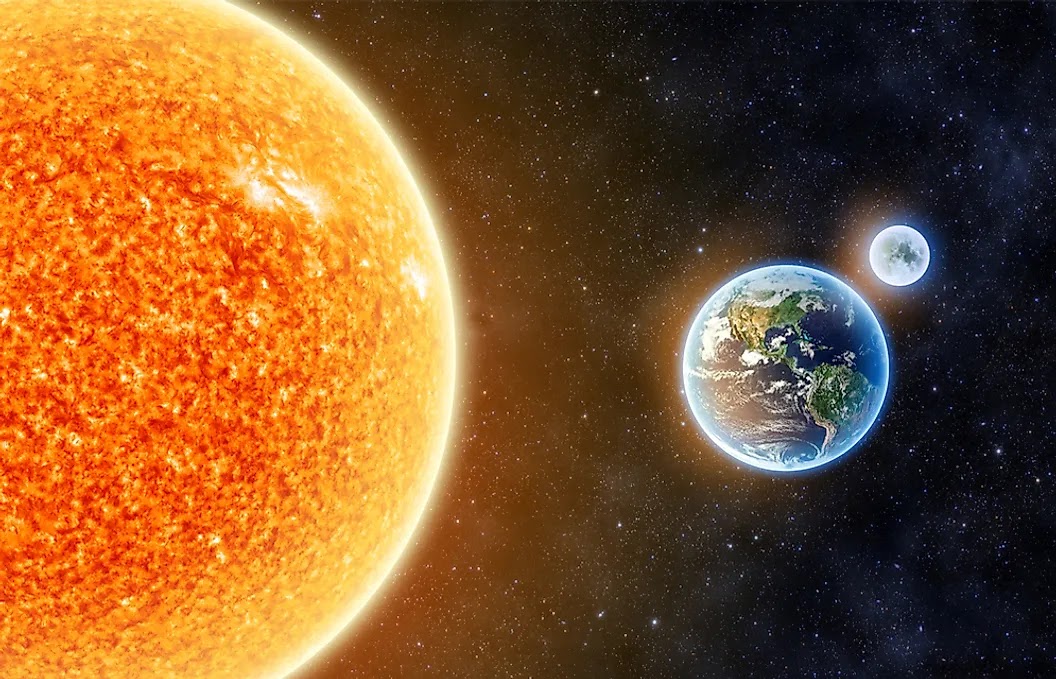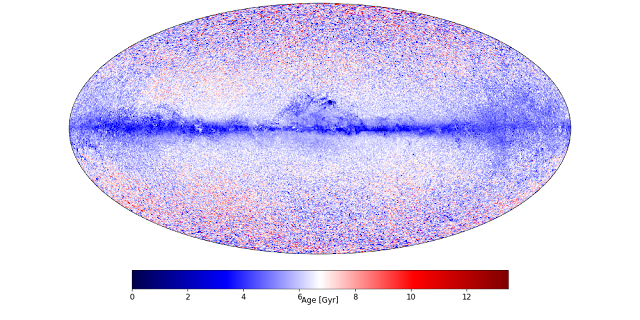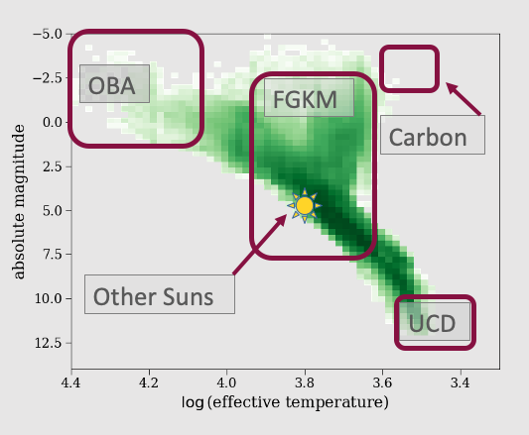Nothing in the Universe is eternal. Even our Sun will someday cease to exist. The ESA Star Mapping GAIA project looks into the future of the Sun, detecting stars of similar mass and composition in order to predict how the death of our star will occur together with the Solar System, since it is extremely important for the inhabitants of the Earth to have an idea of our future fate.

We already know that the Sun lives thanks to nuclear fusion. Over the next few billion years, the Sun will continue to heat up, burning hydrogen in its core, which will gradually contract. While the core is contracting, the outer atmosphere of the Sun will expand significantly, absorbing the Earth and even Mars, turning the Sun into a red giant. When the Sun’s core runs out of hydrogen and helium, it will shed all its outer material, turning into a planetary nebula, and the core will collapse into a white dwarf.

HR Diagram
Recently, the GAIA ESA mission completed the latest collection of DR3 data shedding light on the life cycle of the Sun. One of the key results of this collection was a database with the properties of millions of stars. These factors include their temperature, mass, and the amount of mass they contain. The GAIA mission takes the exact characteristics of the apparent brightness and color of the star from Earth and plots them on a single diagram known as the Hertzsprung-Russell (HR) diagram.

The HR diagram shows how stars change over their long life cycle by measuring their own brightness against the effective surface temperature. While the mass of a star hardly changes during its lifetime, the temperature and size of the star change as it ages due to the nuclear fusion stages occurring in the core.
The most stable period of the Sun
Humanity lives in a period when our Sun is in its “middle age” – 4.57 billion years. However, as it ages, this stability will change. The latest GAIA (DR3) mission data is coming here. Orlagh Creevey from the Observatoire de la Côte d’Azur in France and his colleagues from the Gaia 8 coordination unit analyzed the data for the most accurate observations of stars that the satellite could provide.
They focused on stars with a surface temperature of 3000K to 10000K, as they are similar to the Sun, which surface temperature is 6000K. In addition, such stars in the Milky Way live long enough, so they can tell the story of our galaxy. They are also promising candidates for the discovery of exoplanets.
When will the Sun’s death come?
Then the scientists filtered the results to reflect only stars with a mass and chemical composition similar to the Sun. The selected stars draw a line on the HR diagram, which depicts the evolution of our Sun from its past to the future, as they have allowed for a change in age. This means that the temperature and brightness of the Sun will change with age.
According to the conclusions, our Sun will reach its maximum temperature in about 8 billion years, and then quickly begin to cool and increase in size, becoming a red giant star in about 10-11 billion years. Then the Sun will go down and go into a weak white dwarf state.
What will happen to the Earth?
The brightness and temperature of the Sun increase by 10% in about a billion years. Although 10% may seem insignificant, they will heat the Earth enough to make it uninhabitable in 2-3 billion years. After that, the Earth will physically exist, but its surface will be hot and dead.
Our planet will die before the Sun. During the inflating of the atmosphere of our Sun due to its transformation into a red giant, the planet will be absorbed by our star.
According to Physics-Astronomy
Follow us on Twitter to get the most interesting space news in time
https://twitter.com/ust_magazine

